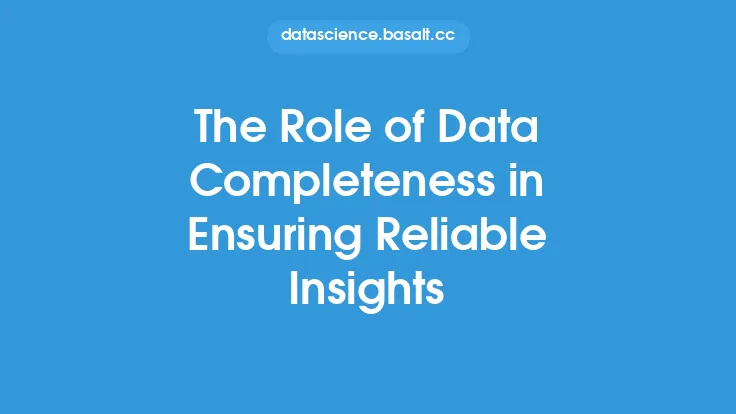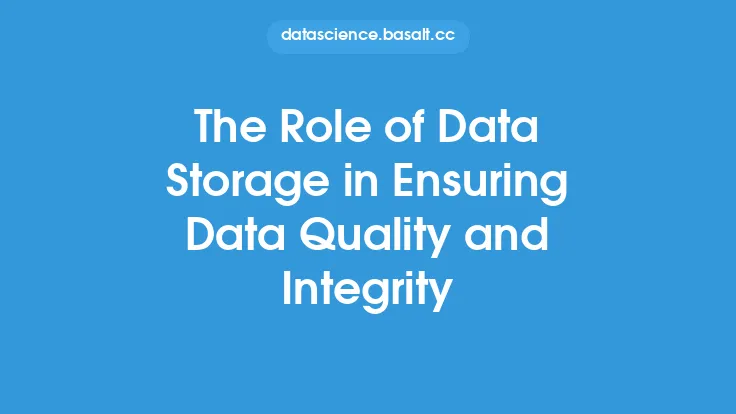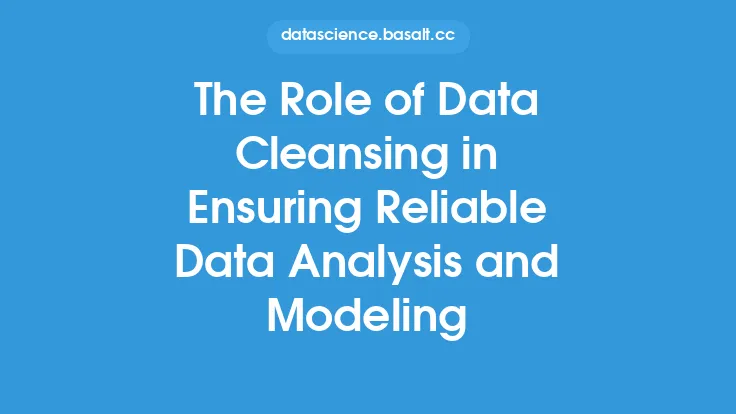Data consistency is a critical aspect of data quality that plays a vital role in ensuring reliable analytics. It refers to the accuracy, completeness, and uniformity of data across different systems, applications, and sources. Inconsistent data can lead to incorrect insights, poor decision-making, and ultimately, negatively impact business outcomes. In this article, we will delve into the importance of data consistency in ensuring reliable analytics, its benefits, and the technical aspects of achieving data consistency.
Introduction to Data Consistency
Data consistency is achieved when data is accurate, complete, and consistent across different systems, applications, and sources. It involves ensuring that data is formatted correctly, follows standard rules, and is free from errors. Data consistency is not a one-time task, but rather an ongoing process that requires continuous monitoring and maintenance. It involves identifying and correcting inconsistencies, updating data to reflect changes, and ensuring that data is properly synchronized across different systems.
Benefits of Data Consistency
Data consistency offers numerous benefits, including improved data quality, increased accuracy, and enhanced reliability. Consistent data enables organizations to make informed decisions, identify trends and patterns, and optimize business processes. It also helps to reduce errors, improve data integration, and enhance data sharing. Moreover, data consistency is essential for regulatory compliance, as inconsistent data can lead to non-compliance and reputational damage.
Technical Aspects of Data Consistency
Achieving data consistency requires a combination of technical and procedural measures. One of the key technical aspects of data consistency is data standardization, which involves defining and implementing standard rules and formats for data collection, storage, and exchange. Data standardization ensures that data is consistent across different systems and applications, making it easier to integrate and analyze. Another technical aspect of data consistency is data validation, which involves checking data for errors, inconsistencies, and completeness. Data validation can be performed using various techniques, including data profiling, data quality metrics, and data certification.
Data Consistency Models
There are several data consistency models that organizations can use to achieve data consistency. One of the most common models is the data governance model, which involves establishing policies, procedures, and standards for data management. The data governance model ensures that data is managed consistently across different systems and applications, and that data quality is maintained. Another model is the data stewardship model, which involves assigning responsibility for data quality to specific individuals or teams. The data stewardship model ensures that data is accurate, complete, and consistent, and that data quality issues are identified and addressed promptly.
Data Consistency and Data Integration
Data consistency is critical for data integration, as inconsistent data can lead to integration errors and data quality issues. Data integration involves combining data from different sources, systems, and applications, and inconsistent data can make it difficult to integrate data correctly. To achieve data consistency during data integration, organizations can use various techniques, including data mapping, data transformation, and data quality metrics. Data mapping involves creating a map of data sources, systems, and applications, and identifying data inconsistencies and errors. Data transformation involves converting data into a consistent format, and data quality metrics involve measuring data quality and identifying areas for improvement.
Data Consistency and Data Warehousing
Data consistency is also critical for data warehousing, as inconsistent data can lead to data quality issues and incorrect insights. Data warehousing involves storing data in a centralized repository, and inconsistent data can make it difficult to analyze and report data correctly. To achieve data consistency in data warehousing, organizations can use various techniques, including data profiling, data quality metrics, and data certification. Data profiling involves analyzing data to identify inconsistencies and errors, and data quality metrics involve measuring data quality and identifying areas for improvement. Data certification involves verifying data quality and ensuring that data is accurate, complete, and consistent.
Conclusion
In conclusion, data consistency is a critical aspect of data quality that plays a vital role in ensuring reliable analytics. It involves achieving accuracy, completeness, and uniformity of data across different systems, applications, and sources. Data consistency offers numerous benefits, including improved data quality, increased accuracy, and enhanced reliability. To achieve data consistency, organizations can use various technical and procedural measures, including data standardization, data validation, data governance, and data stewardship. By prioritizing data consistency, organizations can ensure that their analytics are reliable, accurate, and informative, and that they can make informed decisions to drive business success.





